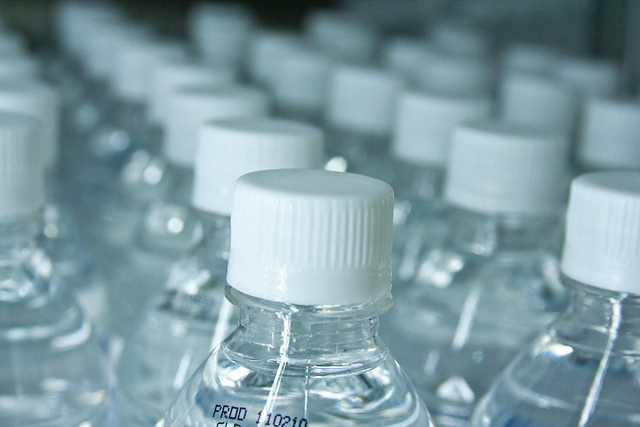

When students start school in the Salinas Valley town of Bradley, they bring with them with pens, paper and notebooks. The school district provides their water bottles.
That is because tap water in this south Monterey County school is undrinkable. It’s contaminated with dangerously high levels nitrates.
Bradley’s approximately 49 students, kindergarten through 8th grade, aren’t alone in their lack of tap water.
Officials at schools in San Lucas, a little less than a half hour north of Bradley, discovered about two years ago that the water from their taps isn’t safe. Filling the gap, first with county emergency funds and now with water provided by a bottled water company, was a juggling act at first.
“It was a bit of surprise and sudden scramble to think that ‘uh oh, we have to do something,’” said Principal Nicole Hester.
The Washington Union School District, off Highway 68 between Salinas and Monterey, is also without potable water.
In fact, more than 75 applications to the California Department of Public Health’s fund for drinking water projects last year involved schools. Projects included digging second wells to ensure continued access to drinking water, replacing a 50-year-old redwood water storage tank and dealing with nitrates in Riverside and Monterey counties.
The danger from water with nitrates or naturally occurring arsenic, as is the case for the Washington school district, is serious. Schools must provide bottled water rather than boiled tap water because boiling would only concentrate the minerals, said Cheryl Sandoval, Monterey County Environmental Health Supervisor.
Nitrates are most dangerous to babies under 6 months, in whom it can cause blue baby syndrome, and pregnant women, Sandoval said. In others, nitrates are expected carcinogens. Exposure to arsenic can cause skin damage, circulatory problems, increased cancer risk and more.
“There’s a whole slew of concerns,” she said.
Poor water quality in schools is largely, but not entirely, a rural issue. In rural communities the problem is frequently nitrates, likely from neighboring farms where nitration-based fertilizers are used.
The well that provided water to San Lucas was flagged in a 2001 safety assessment as being “vulnerable to synthetic and organic compounds and nitrates” because of its location in an agricultural area.
But where else is a rural community to get water if not from an agricultural area? It’s a complicated situation.
“My community is involved in ag,” San Lucas principal Hester said. “We don’t point fingers. We don’t blame. We understand this is how things work. When you live in an ag area this is how things happen. We get it.”
It’s an issue the state has tried to solve with emergency grants designed to help find temporary water supplies for disadvantaged communities.
“Access to clean drinking water in our rural school districts is clearly a problem in California,” said state Assemblyman Luis Alejo (D-Watsonville) in a statement. “I will continue to focus on providing clean drinking water to those that have been consistently over-looked, including disadvantaged communities and our schools.”
Alejo, who represents most of the Salinas Valley, joined forces with Assemblyman Henry Perea (D-Fresno) this winter to push a series of bills focusing on rural water issues, including one designed to speed the approval process for water projects.
In a state where water leads to political battles, questions about unsafe drinking water aren’t always simply answered with agricultural runoff. The water at Washington district schools, for example, is contaminated with arsenic, which is common throughout groundwater in the region.
Four Monterey County public schools – Captain Cooper, Central Bay High School, and Echo Valley – use water that tested for high levels of lead and copper.
Leaders in schools without access to tap water find ways to make it work.
For Hester, it meant creating new rules in San Lucas schools. To avoid spills and conflicts, water bottles aren’t allowed on desks.
She said that providing ongoing emergency water “likely isn’t in anyone’s budget” and has worked with a bottled water company and the San Lucas Water District to find temporary solutions.
For the kids at Bradley schools, many have used bottle water the entire time they’ve been in school, said principal Ian M. Trejo.
The school started using bottled water because of a strong metallic smell seven years ago. It wasn’t until recently that tests came up positive and the bottled water became mandatory.
The school provides individual bottles for students to fill at water stations around campus and washes the bottles in the cafeteria.
“It probably sounds like a big deal to folks in an urban area,” he said. “But these kids start as kindergartners using bottled water. Anything else would seem unusual to them.”
Because the school operates the well, Trejo doesn’t receive extra cash for clean drinking water. To him, it’s a school program like any other designed to keep students safe and healthy in class and is funded by school.






You must be logged in to post a comment.